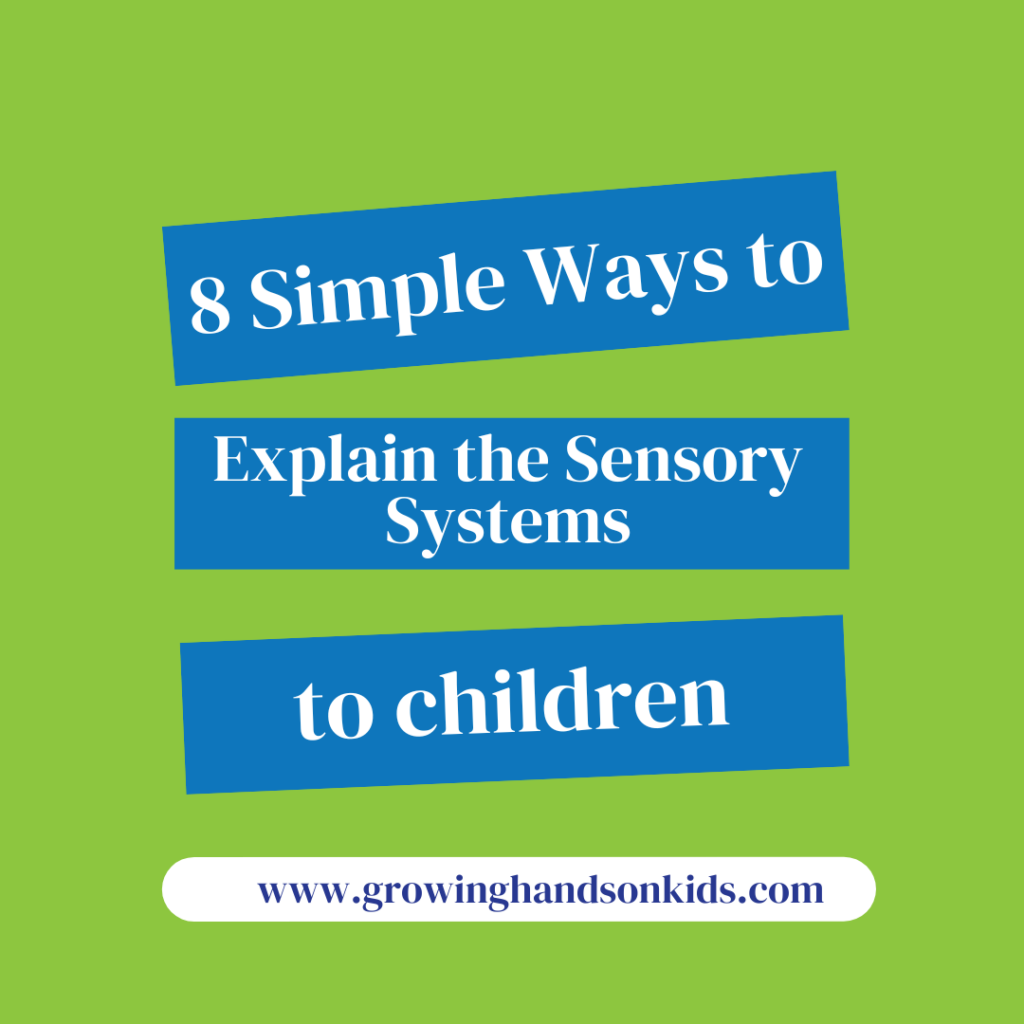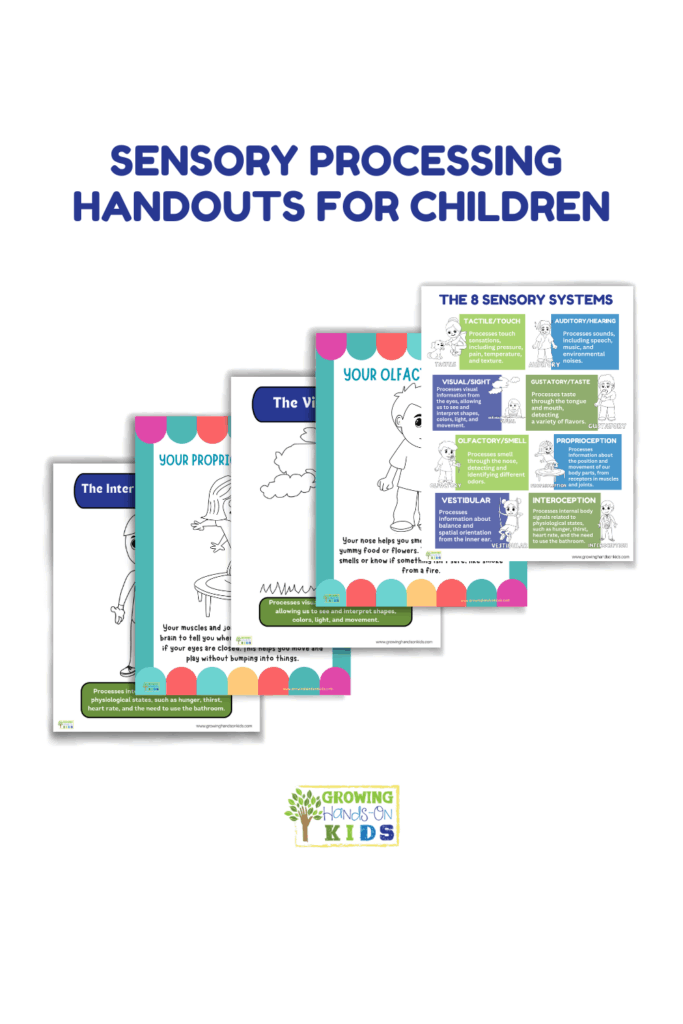8 Simple Ways to Explain the Sensory Systems to Children
Affiliate and Referral links are used below to promote products I love and recommend. I receive a commission on any purchases made through these links. Please see my disclosure policy for more details. As an Amazon Associate, I earn from qualifying purchases.
In my last post, I talked about the importance of teaching children about their 8 sensory systems. That may seem intimidating with all the “science language” around the sensory systems. Today I wanted to share some straightforward ways to explain the 8 sensory systems to children.
Check out the end of the post for some simple activity ideas to take this to the next level.
Easy Ways to Describe Each Sensory System to Children
Explaining the sensory systems to children can be fun and engaging when you use simple descriptions and relatable examples. Let's dig into each sensory system. There will be a brief description under each for the adults and then I'll break it down into two easy-to-understand explanations for kids!
1. Visual System (Seeing)
We use our eyes to see what is far or close to us. Most people can use smooth and precise eye movements to scan and visually assess their environment.
- Easy Explanation: Your eyes are like cameras that take pictures of everything around you. This helps you see where you are going, recognize people, and enjoy colorful things like rainbows and flowers.
- Fun Description: “Imagine your eyes are like a superhero's glasses that help you see the world!”
2. Auditory System (Hearing)
- Easy Explanation: Your ears help you listen to sounds like music, people talking, or birds singing. This helps you know what's happening around you, like when someone calls your name.
- Fun Description: “Your ears are like little microphones that pick up all the sounds around you!”
3. Tactile System (Touching)
- Easy Explanation: Your skin helps you feel things when you touch them like if something is soft, rough, hot, or cold. This helps you know if something is safe to touch or if you should be careful.
- Fun Description: “Your skin is like a superhero suit that lets you feel the world around you!”
4. Olfactory System (Smelling)
- Easy Explanation: Your nose helps you smell different things, like yummy food or flowers. This helps you enjoy nice smells or know if something isn’t safe, like smoke from a fire.
- Fun Description: “Your nose is like a little detective, always sniffing out what's around you!”
5. Gustatory System (Tasting)
- Easy Explanation: Your tongue helps you taste things when you eat or drink, like sweet candy or sour lemons. This helps you to know what foods you like or don't like.
- Fun Description: “Your tongue is like a taste tester, letting you know if something is yummy or yucky to you!”
6. Vestibular System (Balancing)
- Easy Explanation: There is a special part inside your ears that helps you balance when you are moving. It helps your body stay upright when you are spinning, jumping, walking, or jumping.
- Fun Description: “Your balance system is like a tightrope walker, keeping you steady no matter what you do!”
7. Proprioceptive System (Body Awareness)
- Easy Explanation: Your muscles and joints send messages from your body parts to your brain to tell you where your body parts are, even if your eyes are closed. This helps you move and play without bumping into things.
- Fun Description: “Your muscles and joints are like a map that tells your brain where everything is, even in the dark!”
8. Interoceptive System (Internal Feelings)
- Easy Explanation: Your body has a way of telling you how you feel inside, like when you're hungry, thirsty, or need to go to the bathroom. This helps you take care of yourself. It can also tell you how you are feeling like when you feel nervous and your stomach feels like butterflies inside or your hands get sweaty when you are scared.
- Fun Description: “Your body sends you secret messages to tell you what it needs, like when your tummy growls because it's hungry! It also tells you when you may feel scared, nervous, or excited!”
Using these simple explanations and examples can help children better understand how their sensory systems work and why they’re important.
Sensory Processing Handouts for Children
Empower your children to explore and understand their sensory world with Sensory Processing Handouts for Children!
Help children understand their sensory systems with these colorful handouts that can be used on a school bulletin board or in therapy sessions. Each description is easy to understand for children of all ages.
Easy Activities to Help Children Learn About Their Sensory Systems
I've gathered some of my favorite activities to help children learn about their sensory systems.

Heather Greutman, COTA
Heather Greutman is a Certified Occupational Therapy Assistant with experience in school-based OT services for preschool through high school. She uses her background to share child development tips, tools, and strategies for parents, educators, and therapists. She is the author of many ebooks including The Basics of Fine Motor Skills, and Basics of Pre-Writing Skills, and co-author of Sensory Processing Explained: A Handbook for Parents and Educators.


